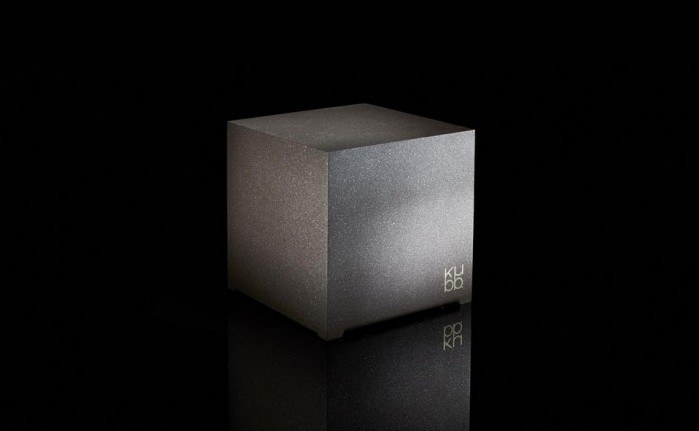Transatlantic Tunnel: 54 Minutes To Travel From London to New York Through a Vacuum Tunnel

Short Bytes: The conceptualization of a transatlantic tunnel has been envisioned since the 19th century. Many technologies and scientific faculties have been explored to accomplish reality for the world’s biggest structure that would take almost a century in order to come into existence.
For me, it’s the best of both worlds. Imagine, how exciting it would be. I had breakfast at my home in London and then I will have lunch at some restaurant in NYC and again the dinner at my home in London.
The concept of a transatlantic tunnel has been prevalent since the 19th century. People have desired to shrink the 5000 km distance between Europe and North America. In 1895, a story titled as “Un Express de l’avenir” (An Express of the Future) was published in Strand Magazine and was credited to Jules Verne. It was the first appearance of the tunnel idea among the general public.
Various other writings have been published that have strengthened the idea of an intercontinental tunnel. Der Tunnel by Bernhard Kellermann, a German novelist, his novel inspired the movie The Tunnel released in 1915 and three of its adaptations in German, French, and British. The City and the Stars (1956) by Arthur C. Clarke and the Tunnel Through the Deeps (1975) by Harry Harrison are other such novels. The science fiction writer Harrison’s version of the tunnel was supported by undersea bridges across the Atlantic Ocean.
With the advancement in the engineering technology, we couldn’t find it impossible to have such a gigantic structure into existence. Engineers have successfully made the Channel Tunnel, which is an underwater train tunnel that connects France and the United Kingdom. But that would be like comparing the size of a mouse with an elephant. Building a 5000 km underwater tunnel isn’t a child’s play.
Transatlantic Tunnel: The Technology
Jules Verne had the vision of a carriage cruising at 1000 km per hour in a tunnel with the help of fans connected to a steam engine. Scientists around the world have proposed the idea of a super speed train based on the Magnetic Levitation. The train would speed inside a vacuum tunnel at a theoretical speed upto 8000 km/hr, that’s roughly six and a half times the speed of sound. It would take only 54 minutes for the train to cross the Atlantic. The transport vehicle that will be used is called a Vactrain which was first proposed by Boris Weinberg – in his book Motion without Friction in 1914 – who created a model of his concept at the Tomsk Polytechnic University in 1909.
Magnetic Levitation is a method used to suspend an object in the air with the help of magnetic field created using electricity. In the process, Lorentz force comes into action which does the job of counteracting earth’s gravitational pull, thereby, lifting the object up in the air. This force is so huge that it can lift a whole train and thus, such trains are called Maglev as they use Magnetic Levitation.
Recommended: How WiTricity will allow you to use Wireless Electricity?
The tunnel — made of 54000 prefabricated pieces — will float approximately 50 metres below the sea level and will be held by 10000 tethering cables attached to the seabed. In order to float, the technology used in submarines which utilise the buoyancy force in order to move up and down in the water will be implemented.
The individual tunnel pieces will be designed on the surface and then transported to the place where the tunnel construction is in progress – you can assume it as a large tube chopped into pieces – where they would be connected one after the other by a team of specialists and huge machines. The pieces will be made using two steel layers with foam sandwiched between them. Steel would prevent the tunnel from problems like high pressure, water current impact and collision from a big aquatic animal or some submarine. It would require a whopping 1 million tons of steel to build the tunnel tube, that’s the combined production of all the steel plants in the world for a year.
The idea of placing the tunnel pipe at a depth is ruled out because of the high pressure that becomes unbearable at huge depth. Also, natural disasters are also to be kept in mind while building the tunnel because at 8000 km an hour, if something bad happens in the middle of the ocean, like an act of god, no one would be able to save the passengers except a miracle.
So, basically, what’s happening is that there is a high-speed Maglev which has overcome one of the prominent hurdles in attaining high speeds, friction, as it doesn’t make any contact with the surface. Furthermore, the train is speeding inside a vacuum tunnel so the resistance of air, which is yet another factor that impedes the train, gets eliminated. Thus, you are flashing from London to New York to London.
Is it feasible?
The transatlantic train tunnel project has been featured in an episode of Discovery Channel’s Extreme Engineering. The episode explains the technical aspects of the project and different issues that may pose as a threat to the tunnel. For such a gigantic project – which isn’t impossible to build, the scientists believe – It would require around 100 years to come into existence, with an estimated cost of $12 trillion. I’m afraid, how much they would charge for a single ride. Afterall, the $12 trillion amount spent on the project will have to be recovered.
One major perspective of the making process is finding the correct path to lay the tunnel. Earlier, the path from the USA passing through Canada, the lands near the North Pole and finally terminating in the United Kingdom, was proposed. But that isn’t feasible considering the bad weather conditions. So, the thought of shortest path is the best was taken into consideration and it was concluded that a straight tunnel from London to New York would be the best.
Also, the safety of the passengers is a big issue. What if a fire breaks out inside the tunnel somewhere in the midway? An advanced safety system is being conceptualized that will eliminate the fire effectively. The whole tunnel will be kept under constant surveillance 24*7 from a centralized control room.
Another major issue that needs to be addressed is the extra gravitational pull that would be experienced by the passengers during the commute at hypersonic speeds. The intensity of the gravitational pull would be so immense that the blood will rush down from the brain during the transit ultimately making the passengers unconscious for a while. To counteract the gravitational pull, rotating chairs will be installed inside the train that would turn as the train would proceed towards its destination.
The project looks promising on the paper but the real scenario would be very much different. What if an accident occurs in the tunnel? The train along with the passengers will speed to heaven within seconds. Such possibilities can’t be ruled out. It won’t be possible to stop the train travelling at hypersonic speeds within a matter of seconds if some technical difficulty is encountered during the transit.
On a conclusive note, I would like to say that the Transatlantic Tunnel project is not impossible. Although, the technological know-how required, overshadows the technology available. We can only make a ballpark estimation about the existence of the tunnel and most of you won’t be alive till the time commercial transit services commence in the tunnel. But we can’t ignore the extraordinary talent manifested by the human race. If we go back 200 years, no one would have thought one could build an aeroplane but the Wright brothers did it. Even the English Channel Tunnel was like a daydream, until the moment, people realised they were sitting inside the train heading from France to the United Kingdom. Necessity is the mother of Invention, the human race will definitely figure out something when they’ll realise the need for the tunnel.
The episode ends with the following lines:
You’ll find these interesting:
- Einstein’s Most Famous Notebook Is Available Online And You Can Read It Right Now
- China Just Created An ‘Artificial Sun’ On Earth In Quest For Unlimited Energy
- Turn Any Surface Into A Solar Panel With Invisible Cells
Participate in the discussion. What do you think about the Transatlantic Tunnel? Write in the comments section below.






